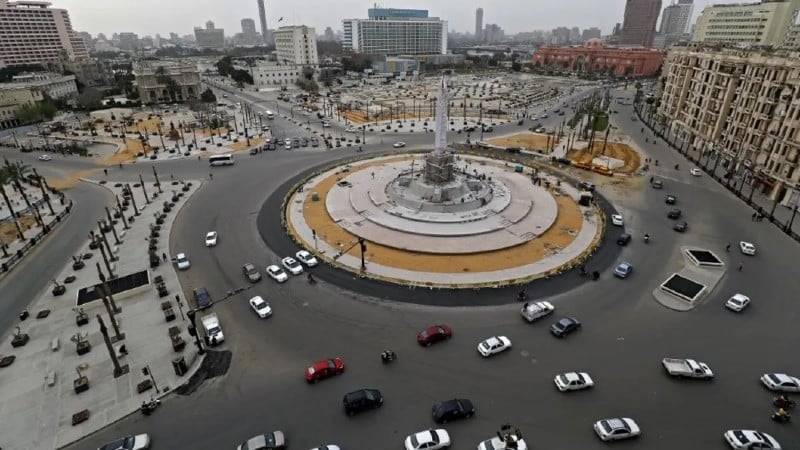Tahrir Square revolution
what happened in Tahrir Square? In the past, was a less-than-popular (and notorious) tourist destination in Cairo, but now it’s a must-see and experience destination.
When Egypt’s revoluation began on January 25, 2011, Tahrir Square was at the center of it all.
where is the square located?
Tahrir Square Egypt, the large, ordinarily congested Square in the center of Cairo,
Became the epicenter of the revolution that deposed President Hosni Mubarak on February 11, 2011.
Crowds swelled to hundreds of thousands, demanding an end to Mr. Mubarak’s 30-year dictatorial rule.
During the 18-day rebellion in January and February, around 850 people were slain.
Why is the Tahrir Square important?
The Square has served as both a practical and symbolic home for the movement since it is large enough to handle the movement’s massive crowds
While also playing a significant part in the country’s history of upheaval and turbulence.
There’s no better place to be than in the middle of town, Information you want to know about Cairo Day Tours
The Square surrounded by some of Cairo’s most important structures, including the national museum,
The colossal Mogamma administrative building, the former headquarters of the ruling NDP party (which set ablaze by protesters during the uprising),
State television, and a number of glitzy international hotels, among other structures.
Tahrir Square history
Located on the Nile, the plaza has been a part of Cairo’s history for millennia.
Its position is crucial, serving as a gateway to Cairo’s central business district and to the Nile’s westward growth.
Before Ali Pasha Mubarak tasked with reshaping Cairo after Paris under the command of ruler Ismail Pasha in the late 1800s, it did not take on its present form.
Before the 1952 revolution and collapse of the monarchy, the plaza (midan) was known as Midan Ismailiya.
Gamal Abdul Nasser dubbed the plaza Midan Tahrir (Liberation Square) in order to commemorate his efforts to “liberate” Cairo
its colonial history by demolishing barracks that formerly housed British occupiers.
From the 1977 bread riots through the 2003 anti-US-led invasion of Iraq rallies, the area has been a customary meeting point for Egyptians with a grievance.
Others argue that the Square’s role as a massive traffic roundabout makes it an unwelcome meeting place for pedestrians
And that rallies there tend to clog up traffic for kilometers around, Click to know more about Egypt Day Tours
“Downtown Cairo a contested region between the rich and the impoverished, government agencies
And private interests, pedestrians and vehicle traffic, street merchants and shops.
There is optimism that demonstrators’ demands in Tahrir Square would resonate across Egypt.
The Square coordinates
In the center of Cairo, Tahrir Square (Midan Al-Tahrir) is one of Cairo’s main public squares.
Khedive Ismail Square was the name of Tahrir Square in the past, Discover now Egypt Nile Cruises
Afterward, the square’s name changed to Tahrir, or freedom, after the July 23rd revolution in 1952, when Egypt became an independent republic.
Since it is one of Cairo’s oldest squares and serves as a symbol of contemporary Egyptian culture,
The Egyptian government is now working on an open-air museum for the 150-year-old square.
After the January 25th and June 30th revolutions
The government began planting palm
And olive trees around the square and removing signage that detracted from its aesthetic appeal.
In the center of Cairo, Tahrir Square (Midan Al-Tahrir) is one of Cairo’s main public squares.
Khedive Ismail Square was the name of Tahrir Square in the past.
Afterward, the square’s name changed to Tahrir, or freedom, after the July 23rd revolution in 1952, when Egypt became an independent republic.
Since it is one of Cairo’s oldest squares and serves as a symbol of contemporary Egyptian culture,
The Egyptian government is now working on an open-air museum for the 150-year-old square.
After the January 25th and June 30th revolutions, the government began planting palm
And olive trees around the square and removing signage that detracted from its aesthetic appeal.
In order to adorn Cairo’s Tahrir Square, four highly unique rams transferred from Karnak Temple to Cairo.
Click to read Guided tour of the Temple of Luxor and the Temple of Karnak
A 5.5-ton statue is the weight of each of the four sculptures. To protect the obelisk
That has relocated from San el-Hagar, the rams are to be position around the structure.
Rams with the body of an elephant, the head of a ram. The deity Amun Ra‘s holy emblem is this.
Tahrir Square 2022
Two of the sculptures have already moved from the courtyard to the temple for preservation and restoration.
Before they are moved to the capital, the two remaining sculptures will moved to the same location
So that further preservation measures may take, Read more about Egypt Tour Packages
Papyrus and other ancient Egyptian symbols will included in the redesigned area.
Date and olive trees, as well as fig and carob trees, are all symbols of the Pharaonic era.
Lighting has been put in the square and at the Egyptian Museum to enhance the architectural splendor of these two historic landmarks at night






